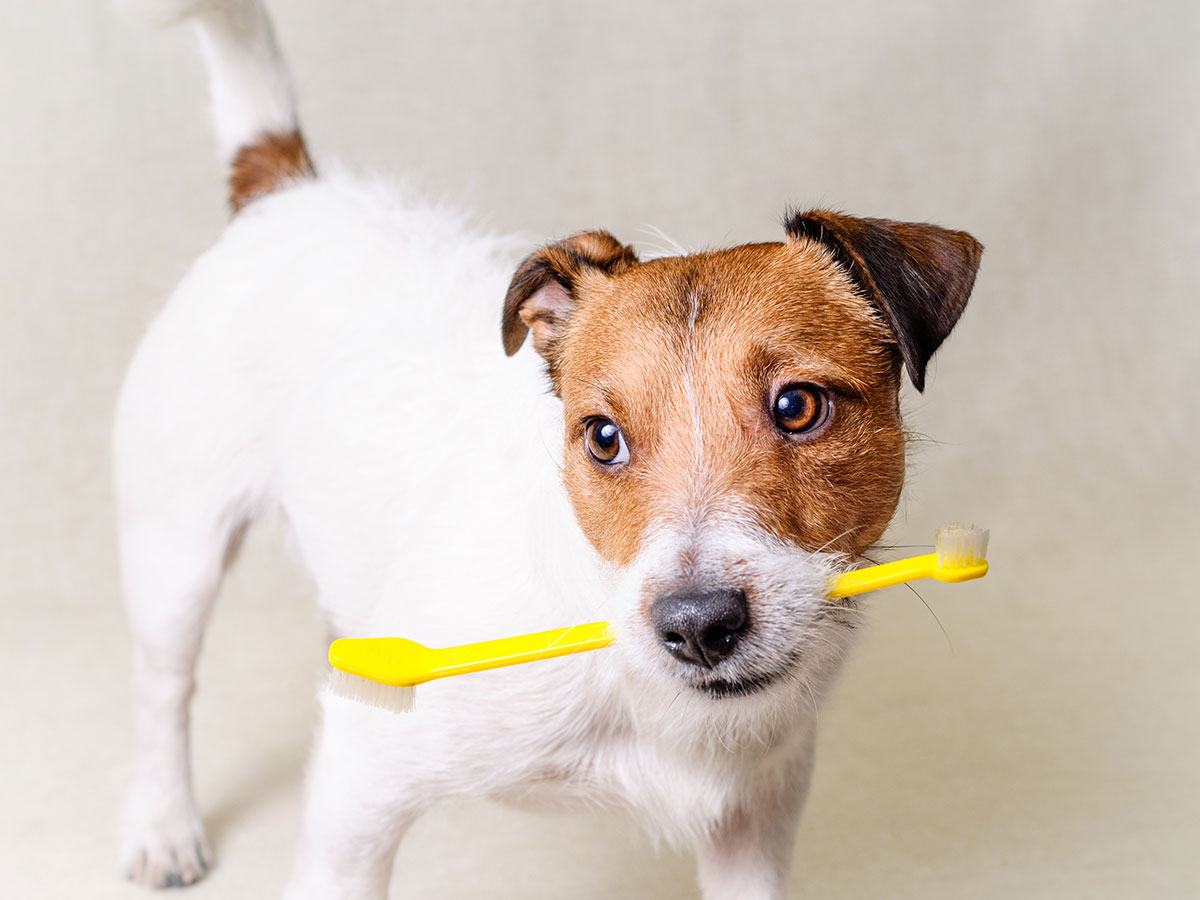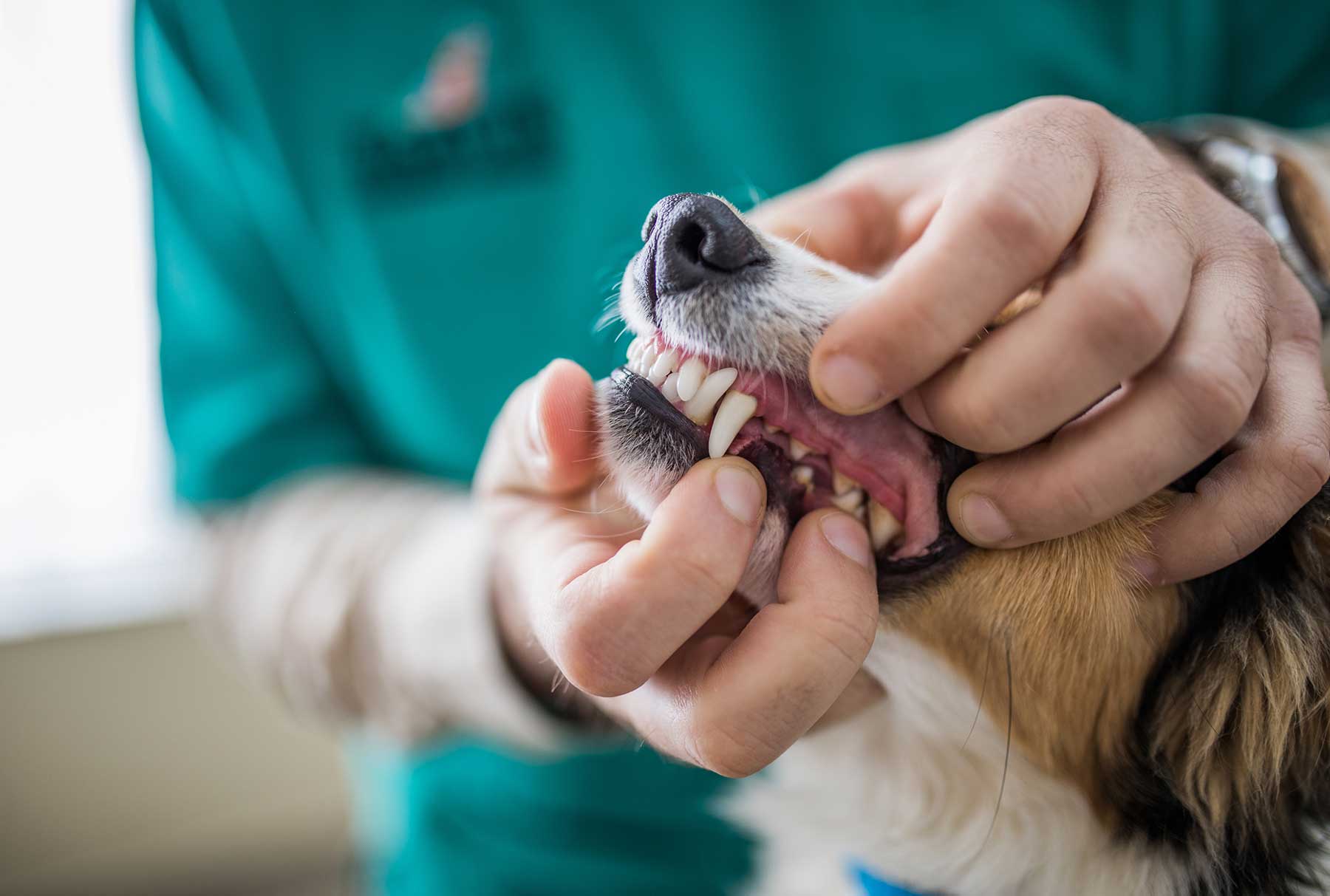In general, more than 70% of cats and 80% of dogs that have reached the age of 3 have suffered from some type of periodontal disease. Dental diseases are uncomfortable for your pets and can result in infection and pain, bad breath and can also lead to other illnesses. Dental health is very important and most issues are preventable. This does not need to cost you a lot of money and you can maintain oral hygiene at home for your furry friend. Start when they are young and it becomes much easier to maintain as your pet ages.
Once a pet contracts a dental disease, this requires more intense treatment under anaesthesia. This can involve scaling and polishing to remove the infection and start treatment with a mouth that is clean. The treatment will then need to be continued at home to try and slow down or prevent the return of dental problems in future.
You can help maintain your pet’s oral hygiene to keep their teeth and gums in tip top condition.
Choosing the right food for oral health
Believe it or not, what you feed your pets can have a big impact on their oral hygiene. Ensure they have a good healthy diet and supplement with food items meant to help remove plaque. They are various chews, biscuits and kibble which are designed to remove tartar and plaque while being chewed. Healthy food and treats for oral health may also include nutrients to help prevent the build-up of plaque on the teeth. Pet treats that encourage saliva flow, chewing and movement in the mouth help your pet rub plaque off naturally, while the saliva helps remove bits of food and protect the teeth. Some pets can also benefit from raw bones, preferably un-cut and the bones should be larger than your pet’s head to prevent swallowing of pieces that are too large. Raw bones are not good for all pets, so check with your dentist if you are concerned.
Pet toothpastes and brushing
Pets can benefit from having their teeth brushed, especially after scale and polishing treatments. Brushing a pets teeth daily will help get rid of plaque and prevent dental diseases. It is important that you use toothpaste and brushes that are designed for use by pets. Never use human toothpaste for your pet due to the fluoride content which is not good for them. While there are various brushes available, it is recommended that you start with a microfiber finger cloth and then move on to a double headed toothbrush. A finger brush is often chosen as an alternate option to the normal toothbrush. It is best if you start brushing your pet’s teeth daily while they are still kittens or puppies although you can start slowly with an older pet and get them used to it.
Start with settling your pet comfortably on your lap or other spot that they are relaxed and you can manage them. You don’t need to do an extensive brushing to start with. You can start getting them used to the toothbrush by dipping it in some stock or other tasty fluid so they get to accept having the brush in their mouths. Then you can try offering the brush with toothpaste without brushing. Once they are okay with this, you can start by just brushing one or two strokes the first time and increase this each time until you can brush all the teeth in one sitting.
Brush the teeth in an oval pattern from the gum margin. Try and get in between the teeth as well as clean around the base of the tooth. Make sure you brush the front and the back of the teeth and clean all the teeth in your pet’s mouth. You can also do this with a finger brush.
Treatment for dental problems
When you take your pet for their annual check-up, ask your vet to do a dental examination as well. For most pets, there will come a time when they may need dental treatment. If you are noticing problems outside of your regular examination, make sure you get it checked out as soon as possible as the quicker teeth are treated, the less risk of the infection spreading or the problem getting worse. Your vet will generally do dental treatment under anaesthetic. They will do scaling and charting of the teeth by hand and ultrasonically. They generally also polish the teeth to remove tartar and plaque build-up. This is similar to having your own teeth cleaned and polished by your dentist. Don’t let dental problems progress as they can lead to a host of other health problems for your pet.




